The Mighty .17 Rimfires
A Tiny Little Cartridge With Great Big Fun.
I am a .17 lover, in spite of my reputation for liking really big guns. Being a .17 shooter is sort of like other things your friends and family would like to keep in the closet. But trust me; it is okay to like the wee rifles because there are few things that go bang that are as much fun.
To buy and like a .17 of any size you have to overcome the opinions of “experts” and writer types who will tell you all of the “bad” things about them. If you begin with the foundation that it is likely few of these naysayers have ever fired a .17, it immediately makes you feel better about the smallest of the commercial rounds. That they foul badly, are inaccurate, blow like feathers in the wind and have no killing power is simply untrue. My sweet seventeens have mostly been centerfires, and their emphasis has been on speed. Many of them are honest 4000 fps propositions and the fastest bullet I have ever chronographed was a .17, fired over the Oehler at 4600 fps. I have shot numerous sub-half-inch groups, thumped lots of various small critters, a few coyotes and some deer. With my long term affection for .17s it will not surprise you that I couldn’t wait to get my hands on the Hornady Rimfire when it was released over a decade ago.
A bit of trivia may interest those who care about ballistics and gun powder. When the bore gets small, as in the .17; internal ballistics, pressure, becomes a magnified issue. This is especially true with a rimfire case, and its relative lack of strength. The head must be thin so the firing pin can ignite the priming mix, where a centerfire case head is many times thicker and stronger. Rimfire cartridges therefore must operate at relatively low pressure. Necking the .22 magnum down to .17 no doubt became a ballistician’s nightmare. In fact the early attempts to make a .17 rimfire by others than Hornady were still born. It was by strange coincidence that Hodgdon made a new and better powder to load .410 shotshells . . . Lil Gun and at the same time made the .17 rimfires possible. This powder that makes exceptional .410 shells and allows the .22 Hornet to scream turned out to be the perfect propellant for the .17 rimfire and it is still the propellant of choice today.
My first .17 rimfire rifle was a wonderful Cooper and the cartridge was the original .17 HMR (Hornady Magnum Rimfire). It only took five rounds for me to be extremely impressed with two things about the new cartridge. First, absolutely nothing happened when I pulled the trigger. That is, it was quiet and simply recoilless. The second was it was accurate, ridiculously accurate; not just by rimfire standards, but by any measure. I took the rifle to Wyoming and into a really good prairie dog town. Oh, yes, there was another wonderful plus to a guy who was pretty sure that the concept of buying shells in store was pure fiction. Ammunition for virtually every rifle I owned had to from the reloading bench. But suddenly there were shells in little boxes of 50, right from the store!
My first prairie dogs were at shorter ranges, from 25 to 100 yards. As expected the little gun killed them very well; no, not with the scattering authority of a .22-250, or even the savage slap from a 4000 fps, 25 grain .17 bullet. But all of them were decisive kills. As the closer ones began to stay in their holes, the range increased. My first impression was how easy it was to hit with the rifle. It could be held and fired with the gentlest hold because there was no recoil to control. And the pure accuracy of the rifle and cartridge simply kept the bullets hitting the crosshairs all the way to 200 yards and even a little beyond. But along with the delight came disappointment. Past 100 yards it did not kill well. Dogs kept going quite a while even after perfect center hits. Most of the 150-200 yard ones were on a small rise with a large hill behind. I could see the bullet impact the far hill in a perfect line . . . after they passed through the targets. It seemed the bullets were not expanding. Later that day expansion tests proved the theory; the bullets would only expand at 90 yards or less. Other shooters experienced the same problem. The original bullets were probably made with high-velocity jackets that were not compatible with the 2500 fps muzzle velocity. With that I abandoned the .17 rimfire and ignored it for a very long time. Please understand, that problem was in the 1990s, the first run of ammunition and as you will see in a moment the bullets we have today are entirely different!
My re-acquaintance with the .17 HMR came in a strange setting, on a duck hunt in a duck marsh. My hunting companion had just bought a new-to-him custom Ruger 10-17 auto and he asked me to help him get it zeroed. It had a heavy barrel, huge scope, laminated stock and bipod. I shot the rifle from prone with its bipod and it reminded me how accurate the cartridge really was. I shot a half-inch group at 100 and then one that measured only 3/8”. The rifle went on to make a less-than inch group at 150 yards and a slightly wind-drifted string at 200 yards that was only ¾-inch high. The trajectory was also fun. I left the impact about 1.5-inches high at 100 yards, dead on at 150, which left it only about five inches low at 200 yards. Later that day I had a chance at a varmint of opportunity at just over 200 yards. A slight hold-over made a center hit and a very dead critter. It was time to revisit the baby-17s!
I had an old and wonderful Ruger 77-.22 magnum that seemed to be the perfect vehicle to become a .17 HMR without much hassle. I looked first at most of the custom replacement barrels and recoiled at the price. Then by chance I sniffed the Green Mountain barrels website and found a special price on a “drop-in” replacement barrel for my Ruger. These were “running-boar” contours, with a large-diameter section near the muzzle; and they cost less than $80! Of course I was skeptical; what kind of: contoured, chambered and blued rifle barrel could one buy for so little? I will cut to the chase; an absolutely FANTASTIC one!! It instantly fit my rifle as advertised and after I tweaked the bedding a little, half-inch groups were the expected norm.
This wonderful success fueled my fire. Since the long-ago introduction of the .17 HMR, Hornady invented an even more minimal cartridge, the .17 HM2 (Hornady Mach 2) . . . as in “2000 fps”. While the HMR is based on the .22 magnum case, the HM2 is based on the .22 long rifle. The .22 case has been lengthened just enough to form a neck, while leaving the full case capacity. Because in my eyes the rimfire .17s are about less, instead of more, I wanted to try the baby one. Now the barrel choice was very easy. This time I ordered a Green Mountain unturned blank, milled it to octagon and fitted it to a little Husqvarna single shot .22 long rifle. Once again the accuracy was, well shocking. Inch groups at 100 yards on-demand forever, and often tiny little clusters that defy logic and reason from a very inexpensive single shot .22, and $80 barrel blank and a rimfire cartridge!!
In addition to my two “custom” rifles I also shot the cartridges in a Sako “Quad”, which is a very interesting concept. This is a rifle with four interchangeable barrels: .22 LR, .22 Mag., .17 HM2 and .17 HMR. The barrels pop in and out of the rifle almost instantly, with the loosening and tightening of one hex-head screw. Two magazines come with the set, one for the “Long Rifle” cartridges and one for the Magnums. Burris even makes a special “Quad” scope with four different references on the knobs so you can record the scope settings for each barrel and instantly zero your rifle for the barrel you have in at the moment. The Sako was very accurate, fed perfectly and had a fine trigger.
With that I have done most of what the run of the mill writer would do for you; shoot groups on paper. Beyond that, I can report that the velocities over the chronograph are almost exactly what is printed on the box. The HMR with 17 grain bullets goes about 2500 fps at 15 feet, while the 20 grain bullets are right on the 2350 fps mark. The baby HM2 averaged just below the printed specs in my rifles (one a 25-inch Green Mountain barrel and the other a 22-inch Sako), chronographing the 17-grain bullets between 1850 and 2000 fps depending on the brand and lot number. As an interesting aside, the little cartridges are so efficient that in this rare instance longer barrels do not seem to contribute velocity.
But for me, those minimal impressions are just the beginning. I suppose I could be called a real world shooter and I wanted to know what the bullets would do beyond making little holes in the paper. Could they, would they overcome my bad luck in the past? And how would the rifles perform in the real world of air and gravity?
Now I am going to risk getting in trouble for interjecting reality. I do not like to color within the lines, but I have found over time it is very difficult to defeat the laws of physics, no matter how hard you may try. To really understand the rimfires we need a base line. They are billed as screaming-fast, flat shooting almost miraculous cartridges. Lets play “what-if” for a moment; what if I walked up to you and said I had just discovered a high-velocity, flat shooting fantastic cartridge and proceeded with my drum roll and told you it was called the .30-30 Winchester? You would of course laugh, and then run the other way as fast as possible. Well, ladies and gentlemen, there is great similarity between the .30-30 and the .17 HMR.
But, having said that, I do not intend to degrade the wonderful little .17s at all, just to put them in perspective. Their screaming velocity and flat trajectory are only relative to their cousins, the .22 rimfires; and that is very fine. What the .17s give us is very flat trajectory, low noise, absence of recoil and tremendous accuracy, all in rimfire packages. Like Clint Eastwood said, “A man has to know his limitations,” and to best understand and use the .17s we have to know their limitations. Those limitations are essentially distance. The little Mach 2 is in reality a 100 yard rifle, while the HMR can honestly be used all the way to 200 yards. The low velocity and very low ballistic coefficients make them very wind sensitive. So, no matter how accurate the rifles and bullets may be, the shooter must pay attention to even a modest breeze in order to hit well. But all in all, when compressed into the first 200 yards of range the .17 rimfires are truly spectacular. If you want to look at the trajectory and downrange velocity of the little .17s you can apply the following ballistic coefficients: 17 grain V-max = .125, 20 grain XTP = .130. With these you can plug in the muzzle velocity of either cartridge and see the flight.
Beyond hitting, we need to consider what the bullets will do after they land. The Mach 2 comes with only one flavor of bullet, be it from Hornady or CCI. This is the 17 grain V-max, and with its 2000 fps or less muzzle velocity only expands reliably out to 100 yards. This again is not a bad thing, for this is a little cartridge, an exercise in minimums and it does minimum perhaps better than anything I have ever fired. It can hit a ground squirrel every time at 100 yards and make him go away cleanly. At the same time the bullets have about half of the “impact-violence” of its larger brother, the HMR. That is, at any range: 25, 50 or 100 yards I see about half of the destruction and tissue damage that I get from the HMR. To a hunter who is after rabbits or squirrels this is a real plus.
The HMR has three kinds of bullets,(with another I have not tried a non-lead core “green bullet.”) the same 17 grain V-max that is loaded in the Mach 2, a 20 grain XTP hollow point and a 20 grain FMJ. The 17 grain bullet is a scatter-pieces proposition for the first 75 yards. It does at 100 yards what the Mach 2 does more or less at 25 yards; while its 200-yard impact is much like the HM2 at 100. Going back to my bad experiences of the past, now the .17HMR can reliably expand on and kill small varmints out to 200 yards. The 20 grain hollow points expand a bit more like a larger caliber bullet at 50 and 100 yards, but they are more or less done performing in the 150 yard realm. The 20 grain FMJ is interesting. The velocity is low enough not to deform the bullets and for the first two inches of penetration they go very straight and make small holes. (Yes, I think they would make very fine edible-squirrel bullets, but I would not trust them on cotton tails.) Like most other pointed, non expanding bullets the FMJs are likely to turn sideways after a bit of initial straight penetration. This actually increases the wound channel, and results in an overall penetration very similar to the V-Max or XTP bullets. If they gave me a magic wand, I would make a 17 or 20 grain FMJ with a flat nose about 1/3 of the bullets diameter. This would make it track straight, and the splash off that flat would make it a good killer on small game and even perhaps coyote or foxes.
At the end of the day the rimfire .17s are very special things. They are tiny cartridges that offer extraordinary accuracy; the kind of accuracy that will make a head shot on a squirrel at 100 yards. With the Mach 2 and HMR you have a choice of two distinct performance levels that can be considered “varmint” and “small game.” The bullet selection is actually better than dedicated .17 shooters have ever known. And there is a variety of rifles and barrel options to fit the interest and budget of almost everyone.
The ammunition selection is very good. Hornady and CCI make the HM2, both loaded with the 17 grain V-max bullet. The HMR is offered by: CCI, Hornady, Federal, Remington and Winchester. If there is a pure downside to the rimfire .17s it is ammunition cost. The HM2 costs $6 to $10 per box of 50 while its bigger brother costs from $10 to $20 per box. Like all other kinds of ammunition watching for special prices really makes a difference.
Are the .17s better than a .22? That in most ways is a very unfair question. To do what it does, there is nothing better than a simple .22 rimfire and at less than $20 per 500 rounds it is the cartridge if you want to shoot a lot at low cost. The .22 rimfires are, in my eyes, probably the most important firearm in the world. Comparing the .22s to the .17s is really comparing apples and oranges, for they are very different. And the very good news is, no one said we had to settle for just one gun. If you like rimfires and performance why not have a .22 and a .17!
Sources: Green Mountain Barrels: www.gmriflebarrel.com
Sako Quad : Beretta USA


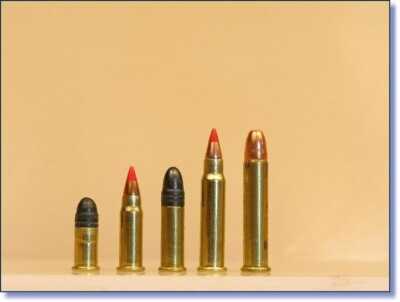
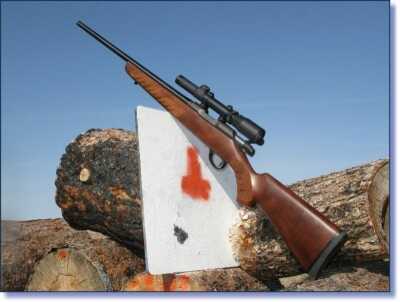
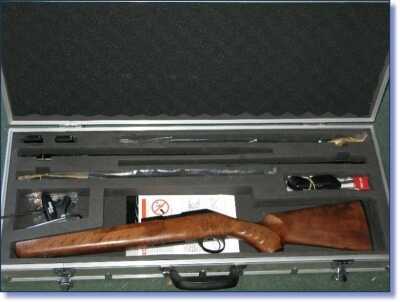
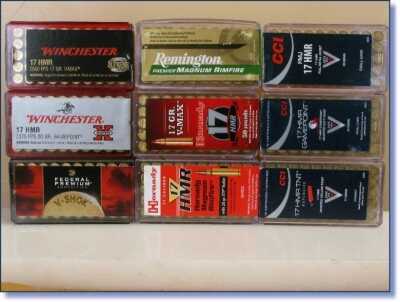



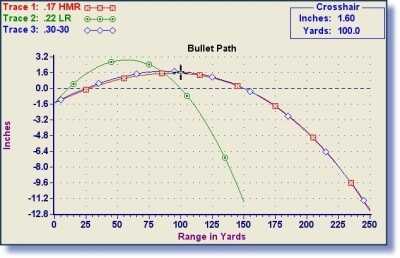

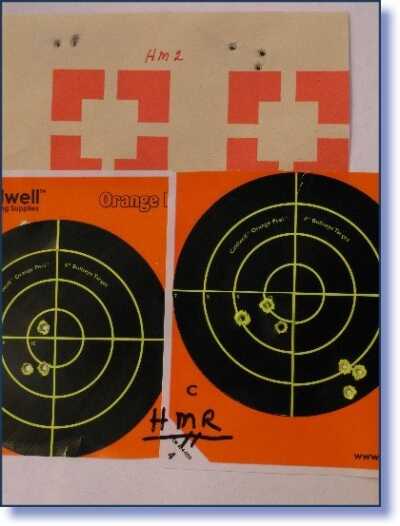
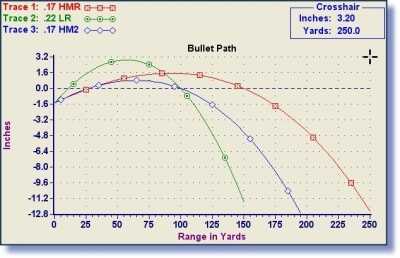

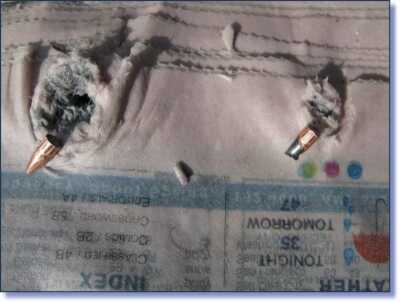
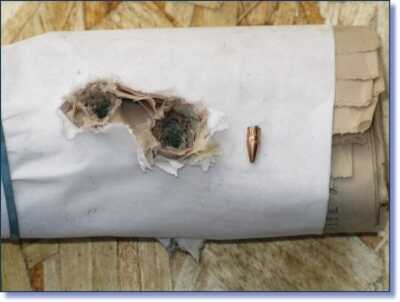

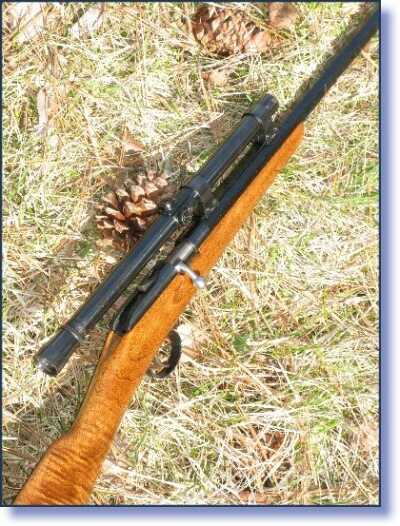
I have 2 clips and one of them has some .17 bullets in it, with the orange tip? I found these in some boxes that had been stored for years and am wondering if it would be worth it for me to sell them? 541-233-8468 Lorrie
This is a great article, and both the HMR .17 along with the .22 be it Marlin, Savage or the 10/22 Ruger are excellent choices. Agree with the comments that comparing one to the other is rather unfair “apples and oranges”. Since the FPS velocity of the bullet .17 impact ranges tremendously; the same may be said for the .17 HMR versus the .22 WMR. Out of the box with no mods at all each rifle is a great choice! Dependent on your interest one will not be disappointed, and selection comes done to personal preference!
Bought 500 rounds of 17.cal hm2 by mistake What guns shoot this round??
There are guns specifically designated for it.
You are about to experience the shooting pleasures upon purchase of the hm2 rifle. I have one. It’s my favorite!
I have a Savage .22 mag and a Marlin 917 .17 HM2. Both very different rifles. The HM2 is definitely more accurate and may even be a tack driver(I don’t use that term loosely). Both are accurate respectively to about the 125 yd range. But once again the HM2 is more accurate. I love this HM2. I was going to buy a HMR but after shooting both I could see no reason to buy the HMR with it’s ammo costs, which in my opinion takes it right out of plinking range and it will cause a squirrel to literally explode. I use the HM2 for hunting squirrels, rabbits, turkey, etc. and also plinking and it’s become my favorite and most accurate rifle next to my Tikka .204. Now that’s a story for another time, but I have been stocking up on ammo and am seriously considering buying another HM2 rifle just like the Marlin I now have. I sure hope that this little round will be around for years to come. I personally love mine.
Excellent article
ps the sub-1″ 100 yd groups are 10-shot groups, in our usual ‘Ellensburg wind’, admittedly chosen when the wind was ‘about the same’.
I settled on the ‘low end’ Savage MkII in .17 HM2 ‘heavy barrel’, savagely marked down at the local gun shop when the popularity dived, did the ‘trigger housing adjustment’ and one-coil off the trigger spring to bring the trigger down to 2.5#. As Ross notes, low noise, no recoil, shoots sub-1″ at 100 yds and posatively disassembles marmots out to 75 yds, kills quickly to 100. Interestingly, one shot at 100 yds went low (my fault), passed through a rough-cut 1″ wood feed bunker wall and still killed the marmot, which didn’t quite make it to it’s burrow a foot from the base of the wood bunker side. Said critters had the previous year eaten the organic farmer who was ‘supporting’ them completely out of cucumbers, pole beans and, after cutting them down like a beaver a tree, sunflowers. At start of the season there appeared to be about 26 of them, half young ones. 5 fell to the low-wall .22 Hornet w/36 gr. Varmint Grenades, the remainder that I accounted for with 17 for 18 shots with the HM2. The remainder fell to a loaned 10-22 to Eric, the owner, who carried in on the tractor while plowing, whence he could shoot at a sufficient downward angle to avoid ricochets. Incredibly fun to shoot. So much so a previously uncommitted Cadet Martini is going to become a .17 Hornady Hornet this spring. Keep enjoying the ‘little guns’!!!
Ross, it’s a pleasure to see your writing again. I’ve missed it, apparently not looking in the right places. Be well!
I forgot to add,, this is in central Idaho!!
WW.
Bill: I am trying to reach you.
Living in a farming area,, and we are infested with “whistle pigs”,, (Columbian Ground Squirrels),, where a family of 9 will eat 1/4 acre of alfalfa/barley per season,, these critters are beyond being pests,,!!
We shoot the .17 HMR exclusively,, at ranges from 50-300 yards,, our longest “one shot kill” being 312 yards.. (thus far)
I have used a variety of rifles,, CZ 452 (burned out the barrel, after 7,000rds),, but an excellent rifle!!,, Savage 17,, (excellent rifle out of the box),, (wooden stock),, and a new rifle that replaced the CZ,, a BROWNING “T” BOLT,, and after a “trigger job”,, (it has a “lawyer” trigger),, it is a hammer!!!
200+ yards are common kills, with all rifles.
these are all scoped with Leupold 6.5 x 20, 30mm tube,,40mm bell,, with the “varmint reticle”!!,, with the “switchview” power adjuster.
the 17 is highly under rated,, even in the wind,, with a good “spotter” that is no problem!!
I have used all ammuntions,, and HORNADY 17 HMR,, is the “only game in town!!”,, consistency,, reliability,, accuracy,,
I “range/dope wind” for my fellow shooters.. and we average 90%+ quality kills.
these rifles are excellent on coyotes,, rock chucks,, badgers,, with “shot placement” being a factor as in all shooting!!
I still have a lot to learn about the .17 HMR,, but the above combination is a hell of a good start!!!
WW.
How does a 5mm rem compare?
I own a .17 hmr made by Henry. Its a lever action with a scope made specially for the .17 hmr. It is the most accurate gun I own not to mention its just plain fun to shoot. Like the article mentions the first I noticed using the Hornady ammo was the destructive power it has on small critters.
I enjoyed this article and coments.Back in the early 70’s i built some wildcats and because the state of Rhode Island had a 22 cal limit for center fire rifles i tooled around with that calibre. one is a 22-6mm that has gone 4100 fps and a 22-06 that has been 4600+ fps and a 25-06 sportster.There all built on 98 mauser actions with stainless bull barrels.The barrels had to be throated and relieved with PT twist to keep reciever pressures down.I also could only use Nossler partition bullets because other bullets would disintegrate.I’m new to this website and maybe i could get someone to email me on these rifles.Thank you vince
Good afternoon All …… in regards to the .17 HM2 cartridge, there is another round available besides the Hornady and CCI Mach 2 cartridge. It is made by Aguila / Eley. The bullet is a jacketed hollow point. You can find this ammo at MidwayUSA.com. Pricing is in line with the Hornady and CCI catridges. I am still in the testing phase on this cartridge; however, preliminary results are very promising. So much as to warranting me to reorder 500 rounds from them recently. Happy, Great and Safe Hunting !!!
I brought a Marlin bolt action with a stainless steel barrel when they first came out in the 90’s. It is the lease expensive rifle I own with the least expensive scope ($45.00 Barska) I own on it. However, it is the most accurate rifle I have ever owned or fired. I find .25in groups at 100 meters, off a bipod, pretty much normal. Don’t know if it is the rifle, or the cartridge or a combo of both, but I do know it works.
Hi, John H.,
Is that a Marlin Model XT-17 VR ?
Glenn; markings on the barrel only say Model 17VS .17 HMR. I should clarify my initial post by saying that extremely tight groups are generally helped by a calm or almost windless day, I think that pretty much goes without saying. The VS was one of Marlin’s initial offering in this caliber, seems to work for me so I haven’t kept up with their other endeavors.
Beware the accelerator excel .17HMR as they have not perfected the feed annd eject yet and besides jamming , it blew up twice on in chamber. They said the little bullts magazine had to leave a little wobble so the bullet would find the hole—- WHAT? . Tell me the bullet has eyes and I’ll believe that too. They traded me the .17 for a 22 mag and it is outstanding. Guess what? The magazine is the same and the bullet has no wobble. —HMMMM—The Excel is a fine semi- auto except in the .17. I was a bit let down , but; what the hey. it.s a great gun in the mag , just a little slower.
If they will tighten the bullet up a little , it would be a great .17. But , as usual- They won’t listen to a commoner. Be careful ; always. Oh , I put a 22mag in the .17 magazine and it fit beautifully ; A little touch -up on the plastic bullet rest of the .17 and I believe it would feed perfectly into the 22 mag; with no eyes. Happy Holidays to all. Dee
Can anyone tell me what the lightest weight .17 HMR cal. Rifle might be ?
I’ve been fascinated with the performance of this caliber, since I tried a friend’s (Believe it was a17-06 Remington or Ruger) a number of years ago – that one was so FAST, it seemed to hit the target before it left the barrel !!!
The only recent .17 cal. I’ve had a chance to look at in person had a barrel that was just too heavy for me – having to use a cane.
Unfortunately we only have two projectiles for the .17Mach2, CCI is probably busy satisfying the no-lead green requirements for California.
Best barrel length – there are numerous sites with info, this was one of the earliest from Bulberry originally http://varmintal.com/17hmr.htm
At about 64 yards the ballistics are identical for the .17HMR and .17Mach2 V-Max
Out to 200 yards the .17HMR V-Max beat all but one of the .22 rounds (#711B) listed on the federal chart out to 200 yards.. However it’s possible that the 24 inch barrel dragged down the velocity of the seventeens.
Federal premium interactive downloadable chart for 2011. http://www.federalpremium.com/resources/ballistics_application.aspx
I have tried both the Mach 2 and HMR , I love the accuracy of both . But I have done some tests on my own as you , I really beleive the HMR is too destructive to use for small game, like squirrel . I would say you more of a mess than useable meat . I almost always go for head and neck shots , but if you had any interest in mounting a animal , the HMR would pretty much elimnate that potential. As a varmint gun [ groundhog , ground squirrel ] the HMR would probably be your best choice . I have used 22lr on groundhog out to about 125 yds. hits can be made consistently, but on the spot kills are further apart .
Great i have a lot of weapons but i have heard about the 17HM2 and i want to buy one where can i get a deal that wont cost me an arm and a leg to get? i want to add it to my stock for fun and shooting. it would be cheaper that my 30-30 i like to shoot a lot.